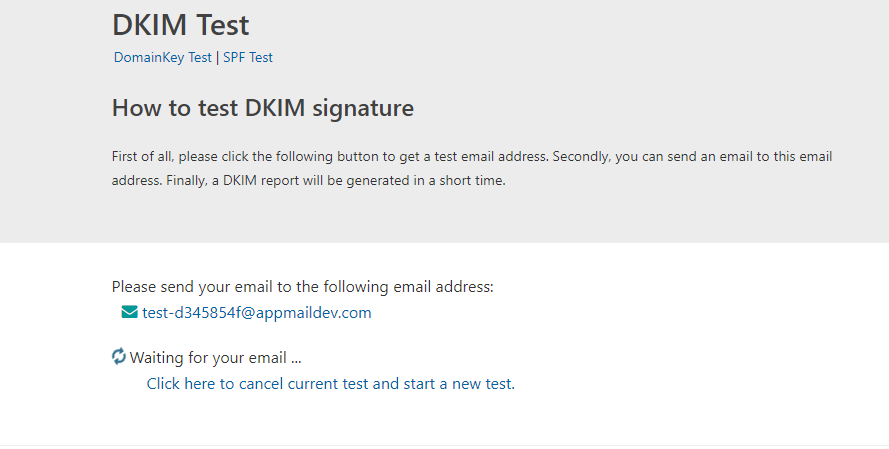Mails not received in either inbox or spam! Here’s the solution..
Experiencing the annoyance of emails disappearing into thin air, neither making it to the inbox nor landing in the spam folder!
This common issue, where emails fail to make it to either the inbox or the spam folder, can leave you feeling bewildered and wondering where your messages went. You may have put time and effort into crafting the perfect email, only to have it go unnoticed by the recipients. This situation not only hampers effective communication but can also have a negative impact on your personal or professional relationships.
Importance of understanding the reasons behind non-delivery
Understanding the reasons behind non-delivery of emails is crucial for improving email deliverability and ensuring effective communication with your recipients. By identifying the root causes of non-delivery, you can take appropriate actions to address the issues and increase the chances of your emails reaching the intended inboxes.
Here are some key reasons highlighting the importance of understanding non-delivery:
1. Problem Resolution: Knowing why emails are not being delivered allows you to troubleshoot and resolve any technical issues or errors that may be hindering deliverability.
2. Optimal Communication: Email is a primary channel for business communication, marketing, and customer engagement. If your emails are consistently not reaching recipients, it hampers your ability to connect and engage with your audience effectively.
3. Reputation Management: Non-delivery can impact your sender reputation, which plays a crucial role in email deliverability. When emails are repeatedly blocked, marked as spam, or bounce back, it negatively affects your reputation as a sender.
4. Customer Experience: Non-delivery of important emails can result in a poor customer experience. It can lead to missed opportunities, delays in critical communication, or frustration among recipients.
5. Email Marketing Effectiveness: For businesses relying on email marketing campaigns, non-delivery can significantly impact campaign performance and ROI.
By emphasizing the importance of understanding non-delivery reasons, you can prioritize proactive measures to improve email deliverability, maintain a good sender reputation, and ensure successful communication with your recipients.
Factors Affecting Email Delivery
Factors affecting email delivery can significantly impact the success of your email campaigns and communication efforts. Various factors determine if your emails reach recipients’ inboxes or get blocked.
Here are a few things that are preventing mail from getting delivered; let’s counter them one by one with solutions:
1. Port 25 Blocked
When an email is sent from one mail server to another, it typically communicates over port 25 to establish a connection and transfer the message. The sending mail server connects to the receiving mail server on port 25 and delivers the email data.
When port 25 is blocked, it means that outgoing email connections on that port are not allowed. This restriction can affect individuals or businesses that operate their own email servers or use specific email clients that rely on port 25 for sending messages.
Solution
a.) Users of RedHat distributions such as CentOS, Oracle Linux, Rocky Linux, AlmaLinux, ClearOS, Scientific Linux, and Fedora Linux can Install the “telnet” package using the “yum” package manager.
yum install telnet
After installing the “telnet” package, you can proceed with testing the connectivity to port 25. Here are the steps to follow:
- Open your terminal or command prompt.
- Type the following command and replace “mail.example.com” with the mail server you want to test:
telnet mail.example.com 25
- Press Enter to initiate the telnet connection to port 25 of the specified mail server. If the connection is successful, you will see a response from the mail server, indicating that you have established a connection.
Note: Remember to replace “example.com” with your own domain or appropriate identifier.
By following these steps, you can check if the port 25 connection is working and communicate with the mail server using telnet. This can help you diagnose any issues related to port 25 or SMTP communication.
b.) Users of Debian Distro such as MX Linux, LinuxMint, Ubuntu, Deepin, AntiX, PureOS, Kali Linux, Parrot OS, Devuan, Knoppix and AV Linux can install the “telnet” package using the “apt” package manager.
To install the “telnet” package using the “apt” package manager, you can follow these steps:
- Open your terminal or command prompt.
- Run the following command:
sudo apt install telnet
- Press Enter to confirm the installation. The package manager will download and install the “telnet” package along with any necessary dependencies.
- Once the installation is complete, you can start using the telnet client by typing the following command:
telnet mail.example.com 25
This will establish a telnet connection to the specified server and port.
If you encounter a timeout or error while installing the “telnet” package, and you suspect that the issue may be related to your internet service provider (ISP). They may be able to provide guidance or investigate any potential issues that could affect your ability to install packages or access certain resources.
2. “Does your SMTP server function properly?”
The Simple Mail Transfer Protocol (SMTP) is a key factor that affects mail delivery. SMTP is a standard protocol used for sending and receiving email messages over the internet. It operates as a set of rules and guidelines that govern the transmission of emails between mail servers.
When you send an email, your email client communicates with your outgoing mail server (SMTP server) using the SMTP protocol. The SMTP server is responsible for routing and delivering your email to the recipient’s mail server.
Solutions
To check if your SMTP server is working or not, you can perform the following steps:
- Check server logs: Review the logs of your SMTP server for any error messages or indications of issues. Logs can provide valuable information about the server’s functionality and any errors encountered during the email delivery process.
- Test email delivery: Send a test email from your email client or application to an external email address. Monitor if the email is successfully delivered without any bounce-back notifications or error messages.
And to test email delivery, you can utilize platforms like
1. mail-tester: Mail-tester.com will analyze the content and technical aspects of your email. It checks factors such as SPF and DKIM authentication, presence of a proper unsubscribe link, content quality, and other elements that influence deliverability.

2. appmaildev: AppMailDev simplifies the process of testing email functionality. By using this service, you can identify and troubleshoot any issues related to email delivery, content rendering, spam filtering.

3. mailgenius: By using Mailgenius, you can gain valuable insights. It ensures successful email delivery by identifying and addressing potential issues.

4. Gmass: Gmass is a valuable tool for individuals, businesses, and organizations looking to streamline their email marketing campaigns and improve email deliverability.

Test email tools assess email deliverability, including spam score, DNS, authentication, and other key factors.
3. Blacklisting to Third-Party
Email servers receiving messages from a blacklisted IP address or domain may block or filter them out, preventing the messages from reaching the recipients’ inboxes.
Third-party organizations maintain databases of blacklisted IP addresses and domains. These databases are constantly updated with information about known sources of spam, malware, or suspicious email activity.
Various reasons can lead to IP blacklisting, and understanding them is crucial for effective prevention and remediation. The most common causes of IP blacklisting include spamming and unsolicited emails, the distribution of malware or viruses, and participating in botnet activities.
Solutions
It is crucial to act right away to locate and fix the root cause if you discover that your IP address or domain has been blacklisted.
So, the first step is to check your IP address. By searching for your IP address in (such as MXToolbox, DNSBL.info, & MultiRBL) these databases, you can identify whether your IP is listed on any public blacklists.
And if your IP is in any Blacklist then you must first request for delisting before starting any kind of mail campaign. To know in detail about IP Blacklisting and Delisting read our article on “The Ultimate Guide to IP Blacklist Checking and Removal“.
4. Private blocklist
A private blocklist actively blocks or filters incoming emails by maintaining a specific list.
Private blacklisting refers to the practice of email service providers maintaining internal lists of blacklisted senders based on their own criteria. Private blacklisting leads to filtered/blocked emails, impacting deliverability and sender reputation.
Solutions
Making sure that their emails don’t wind up in spam is a top priority for businesses that conduct business online. Additionally, you may consult our articles to determine whether or not your IP address is a private blacklist. Which mentioned all the guidelines of specific email service providers “Understanding Private Blacklisting & Delisting for Gmail, AOL, & More“
Private delisting removes the sender from email service providers’ private blacklists (Gmail, Outlook, etc.).
You can also read our article on specific Email Service Providers;
For Yahoo user: “How to solve Email Deliverability issues with Yahoo?“
For Microsoft user: “How to solve Microsoft deliverability issues?“
And for Gmail users: “How to solve Email Deliverability issues with Gmail?“
Manage and update private blocklists to prevent blocking legitimate emails and ensure effective communication.
Best Practices for Ensuring Email Delivery
Ensuring reliable email delivery is crucial for effective communication with your audience. By following best practices, you can maximize the chances of your emails reaching the intended recipients’ inboxes. Here are some recommendations to improve email deliverability:
1. Implement Double Opt-In: Use a double opt-in process to confirm subscribers’ intent and ensure a clean and engaged email list.
2. Use a Reputable Email Service Provider (ESP): Choose a reliable ESP that follows industry standards and has a good sender reputation. They will have the necessary infrastructure and expertise to deliver your emails effectively.
3. Authenticate Your Emails: Implement authentication protocols such as SPF, DKIM, and DMARC to verify the authenticity of your emails and improve deliverability.
4. Optimize Email Content: Craft well-designed, engaging emails with relevant and valuable content. Avoid spam trigger words, excessive use of images, and misleading subject lines.
5. Monitor Deliverability Metrics: Regularly monitor your email deliverability metrics, such as open rates, click-through rates, and bounce rates, to identify any issues and make necessary adjustments.
6. Maintain a Good Sender Reputation: Practice good email-sending habits, comply with anti-spam laws, and promptly handle any recipient complaints or unsubscribe requests.
7. Test and Segment Your Emails: Conduct A/B testing to optimize your email campaigns, and segment your email list to deliver targeted and personalized content.
8. Monitor Blacklists: Regularly check if your IP address or domain is blacklisted and take prompt action to resolve any issues.
9. Monitor Feedback Loops: Set up feedback loops with major email providers to receive notifications about recipient complaints or spam reports.
By following these best practices, you can enhance your email deliverability, maintain a good sender reputation, and improve the overall effectiveness of your email marketing campaigns.
Conclusion
In conclusion, the frustration of emails not reaching either the inbox or spam folder can be a significant hurdle for individuals and businesses alike. However, with a deeper understanding of the challenges and potential solutions, it is possible to overcome these issues and ensure successful email delivery.
So don’t let your emails get lost in cyberspace – take the necessary steps to ensure they reach their destination and make the impact they were intended for.

Leave a Reply
Want to join the discussion?Feel free to contribute!